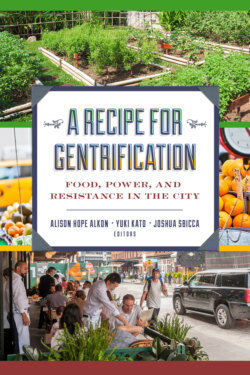Читать книгу A Recipe for Gentrification - Группа авторов - Страница 17
На сайте Литреса книга снята с продажи.
NOTES
Оглавление1 1 To preserve the anonymity of Yelp reviewers, who made their comments public but did not explicitly agree to participate in this study, we do not provide identifying reference to any posts quoted in this chapter, except for the name of the restaurant reviewed.
2 2 To obtain consumer data, we used Yelp—the most widely used social media platform where individuals post comments about restaurants. For each of our two study neighborhoods, we downloaded the fifty most recent Yelp reviews for the ten most reviewed restaurants (as of January 25, 2018). Following Zukin et al. (2009), we assume that the most reviewed restaurants are those attracting large numbers of relatively young and affluent consumers. To obtain data from food experts, we downloaded restaurant reviews from a number of popular websites, including the San Diego editions of Eater, Thrillist, and Zagat. These sites are all supported by national media companies that offer similar publications in large cities across the United States and tend to highlight the same type of restaurants. In addition, we gathered data from San Diego Magazine—a lifestyle publication that features the “Best of San Diego”—and the San Diego Brewers’ Guild, which has been actively involved in promoting craft brewing in the region and supporting the “gastropub” and “bar dining” trend. We collected a total of 589 reviews published during a two-year period (2016 and 2017), with a number of popular restaurants reviewed across multiple platforms.
3 3 The categorization of tracts into eligible to gentrify, gentrified, and affluent groups is based on computations using data on median income, property values, proportion of college educated residents, race, and changes in these variables (see Joassart-Marcelli and Bosco 2018b for details). Under this definition, a census tract is considered gentrified if its median income was in the bottom third at the beginning of the period and it experienced a rapid increase in property value, percentage of college educated, and percentage of white residents.
4 4 Using the NVivo qualitative analysis software, we conducted a word frequency analysis of online reviews of the ten most popular restaurants in each neighborhood, relying on Yelp, Eater, Thrillist, Zagat, and San Diego Magazine. Our frequency analysis accounted for words describing the food, eating establishments, and neighborhood environment as well as reviewers’ attitudes toward each of these three. Aided by the software, we filtered our results, excluding proper names and other non-necessary and redundant words, to create word clouds.
